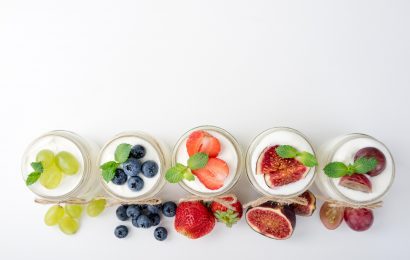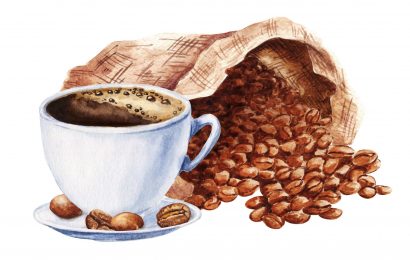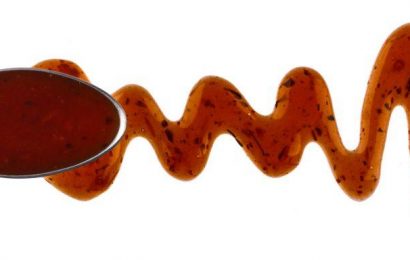A quick perusal of the Web or the health and diet section of any bookstore will turn up a number of articles and books with the word “inflammation” in the title. Authors blame the insidious condition for everything from hay fever and depression to crow’s feet; many assure readers that adherence to their specialized, anti-inflammation diet plan will help them shed pounds, banish pain, and reverse the clock. The types of foods common to many of these diets include whole grains, dry beans and legumes, oily fish, nuts and seeds, fruits, vegetables, and certain herbs and spices. These sound like nutritious foods, but is inflammation really the cause of so many ills? And will following a particular diet cure it?
We do know that there is an association between chronic inflammation and obesity, diabetes, and heart disease. What’s less clear is how the association works, how concerned you should be about it, and what, if anything, you can do about it. But first, a little background on inflammation is needed.
What is inflammation?
We’re all familiar with acute inflammation, which you can feel and often see quite distinctly. Inflammation is the body’s natural response to injury and the first step in healing; in its acute form, it can be quite dramatic. Whether you have a virus or a cut, the body sends white blood cells to the site of infection or injury, where they release chemicals to protect you. The most obvious sign of acute inflammation is pain, such as when you have a sore throat; you may also experience fever in the case of an infection, or swelling as your body deals with a traumatic injury.
Chronic inflammation is not so easy to identify. “What we’re talking about here is low-grade inflammation that you don’t see or feel easily,” says Vivian Fonseca, MD, Professor of Medicine, Tullis Tulane Alumni Chair in Diabetes, and Chief of the Section of Endocrinology at Tulane University Medical Center in New Orleans. “The whole body is essentially inflamed, particularly the blood vessels.”
This inflammation may lead to further biochemical changes that could be detrimental. “Say you get a virus in your throat. You kill the virus, you have some irritation for a few days, and then you’re OK,” says Dr. Fonseca. “But just imagine if it went on in a very low-grade way for many years; things will never be right. And this seems to be going on in the blood vessels, in some tissues like the liver, and in the heart, and lead to problems in the long term.”
Unfortunately, if you have chronic, low-level inflammation, you probably can’t tell. It isn’t something that you can feel, like swelling or pain. There is a test that may be helpful in detecting it, but it may only be useful under certain conditions. The C-reactive protein (CRP) test measures markers present when inflammation is high and is often ordered if a person is at risk for infection, such as after surgery. High levels of CRP will indicate infection; falling levels indicate the infection is subsiding. For the average person who is not sick or recovering from surgery, however, CRP testing is rarely indicated.
“I think many people recognize that CRP is only a small marker and may not be that sensitive a marker,” says Dace L. Trence, MD, Director of the Diabetes Care Center at the University of Washington Medical Center in Seattle. “We know that CRP can go up with a cold and then come right back down again, so it isn’t as simple as taking one test to check whether or not inflammation was going on; you wouldn’t have any symptoms, and that’s the problem.”
The test may be useful for people at moderate risk for heart disease to determine if they are at more risk than they thought, but Dr. Fonseca does not recommend testing the average person with obesity and/or diabetes. “The American Heart Association and the Centers for Disease Control and Prevention suggest screening with CRP for people at moderate risk for heart disease, but we’re not making recommendations about people at moderate risk for diabetes because we don’t know that any intervention to suppress inflammation will do any good.”
Inflammation, heart disease, and diabetes
Scientists are just beginning to understand how widespread the effects of chronic inflammation may be throughout a person’s body and what kind of damage it might do. They have a tighter grasp on what it does to blood vessels, however, which is where most of the research has focused. In a nutshell, chronic inflammation stresses arterial walls and is associated with the development of atherosclerosis, the buildup of fatty deposits in arterial linings.
It’s also becoming clearer that inflammation may be behind insulin resistance, the reduced ability of the cells to respond to insulin, which is a cause of high blood glucose in Type 2 diabetes. Markers that indicate inflammation and are predictive of heart disease are higher in people with Type 2 diabetes than in those without, even when matched with other risk factors for inflammation such as body-mass index, smoking, and sex. “In fact,” says Dr. Fonseca, “in people with diabetes, almost every tissue has a little bit of inflammation.”
Lifestyle habits over time may play a role in chronic inflammation. “We think that while there are clearly genes involved in the development of diabetes, there are also environmental components,” says Allison B. Goldfine, MD, Section Head of Clinical Research at the Joslin Diabetes Center in Boston and the lead researcher investigating the impact of an anti-inflammatory medicine on diabetes (see “Salsalate Study”). “The sedentary lifestyle and excess caloric intake that lead to excess weight gain promote this chronic, sub-acute inflammation, which then participates in the development of Type 2 diabetes.”
It’s possible that simply being overweight triggers inflammation. “Maybe lack of exercise [is a cause],” says Dr. Trence. “This is an area where there are a lot more questions than answers, and I think people are beginning to recognize that there may be various factors that play a role.”
Whatever causes inflammation in the first place, its presence creates an unfortunate set of consequences in a few very concrete ways. “The immediate contributions of the inflammatory state are, first, atherosclerosis, heart attack, and stroke; and second, insulin resistance and Type 2 diabetes,” says Paresh Dandona, MD, Director of the Diabetes-Endocrinology Center of Western New York and Chief of the Division of Endocrinology at the Medical School of the State University of New York at Buffalo. “Of course, Type 2 diabetes feeds into heart attack and stroke as well. The rates of heart attack and stroke are two to four times greater in the diabetic population.”
It’s also possible that inflammation could trigger numerous reactions that cause other problems. “It’s basically a chemistry issue,” says Dr. Trence. “It’s a chemistry that turns on a whole cascade of events that are very detrimental to the inside of a blood vessel as well as to the immune system.”
The role of diet in inflammation
How much does what you eat have to do with it? Possibly quite a bit, which is both good and bad news. First, the bad news: Some foods cause inflammation, and some people are more susceptible to inflammation than others.
Back in 2000, Dr. Dandona and his team found that people who ingested 75 grams of glucose, the standard amount used in an oral glucose tolerance test to determine if someone has diabetes, had an inflammatory reaction to the glucose. “We saw oxidative stress; oxidative stress and inflammation are back-to-back things that happen together. You form a whole lot more free radicals when you’ve taken that amount of glucose.” (Free radicals are the unstable, highly energized molecules that cause oxidative damage to body cells and tissues.)
Next they put saturated fat to the test, using cream as the source. “Again, we saw the same oxidative stress with increased levels of free radicals being formed,” says Dr. Dandona. But since humans don’t generally take meals of solely glucose or cream, they decided to see what happens after a person eats a meal of mixed macronutrients: in this case, a small McDonald’s meal that topped out at 900 calories. The findings were not encouraging for fans of fast food.
“We showed that a small McDonald’s meal resulted in inflammation and oxidative stress at a cellular, molecular level,” says Dr. Dandona. The markers Dr. Dandona and his team used to establish the presence of inflammation and oxidative stress are the same ones the body produces when it is seriously hurt. “In the cells, we look at nuclear factor kB (NF-kappa B), which is the orchestrator of inflammation. When we get infections, it is NF-kappa B that gets stimulated,” he explains. “We were shocked to find that what infections do, food does, too.” Disturbingly, the post-meal inflammatory reaction did not resolve quickly – study subjects still showed signs of inflammation five hours after eating.
Dr. Dandona’s research also found that people with obesity who already had a basic level of inflammation and oxidative stress had a worse reaction than people of normal weight when challenged with a fast-food meal. “Sure enough, they start from higher levels of inflammation, they achieve a much higher level, and the inflammation is much more prolonged.” The oxidative and inflammatory stress observed with meals probably contributes to atherosclerosis, heart attack, and stroke.
Now the good news: Some foods may protect against inflammation. Dr. Dandona and his team tested a portion of orange juice containing 300 calories against an amount of glucose containing 300 calories and found that while the glucose caused inflammation, the orange juice did not, despite the fact that it, too, is pure carbohydrate.
Their next experiment investigated what happened when subjects drank orange juice with a small McDonald’s meal. “And guess what: Orange juice neutralizes inflammation. To me, that is one of the most amazing findings in the field of nutrition today,” says Dr. Dandona. “On the one hand you have all these terrible things that cause inflammation, but if you take a certain amount of orange juice, it balances things off. That’s really remarkable.”
Part of the reason orange juice and glucose have a different impact on inflammation may be due to the nature of the type of carbohydrate: The sugar in orange juice is half fructose, and fructose is noninflammatory. But what would cause it to be anti-inflammatory? “The secret is probably in agents called flavonoids, which are what gives orange juice its yellow color,” says Dr. Dandona. “And two major flavonoids are hesperetin and naringenin, which have shown in the test tube to suppress free-radical formation and to be anti-inflammatory. Chances are that the secret is in these flavonoids.”
Does this finding mean that anti-inflammation diets work? From a scientific viewpoint, it’s too soon to make any such claims. “I don’t know whether anyone has actually tested that out, and that’s the worry,” says Dr. Dandona. “I’ve not seen anything in print or in the literature that would suggest the kind of meticulous testing that we have subjected our foods to.”
It seems likely, however, that the anti-inflammatory diet plans currently being promoted, which typically stress the consumption of fruits and vegetables, are on the right track. “Nature is not irrational,” says Dr. Dandona. “There are a lot of compounds like flavonoids that are found in fruit juices and vegetables. Probably we’ll come around to the answer that the ideal way to handle yourself is to have as much fruit and vegetables as possible.
“I’m hoping that in the next five or six years we find from our work a set of foods that are noninflammatory and possibly, to be more ambitious, anti-inflammatory.”
What should you do?
Until science reveals more about the influence of diet on inflammation, it seems prudent to follow the advice we’ve heard for years about a healthy lifestyle. Avoid high-fat and processed foods, and emphasize fruits and vegetables, particularly the colorful ones. Exercise, too – although it causes acute inflammation, it stresses the body in a way that is protective of blood vessels and may have a positive impact on the very things that inflammation hurts in the long term.
Unfortunately, again due to the lack of research, it’s hard to say what kind of exercise and how much. “Probably not the kind of exercise of going from the house down to the post box and back again, but whether it has to be aggressive exercise is another question,” says Dr. Trence. “Basically just keep moving the muscles, moving the blood vessels. There are certainly benefits in improving cardiovascular tone.”
What about some of the more magical claims concerning anti-inflammatory diets? Will the right oils and berries erase your wrinkles? “I really wish that were true,” says Dr. Trence. “It’s probably not a bad idea to rely on fruits and vegetables for their antioxidants; clearly there’s support for that and there has been for years. But what constitutes a healthy diet – two apples a day versus 10 apples a day – at this point, we don’t have the data to determine that.”





